Chapter 3 – Reduce or Reshape Facial and Nape Hair
3.2 Outlining and Detailing Techniques
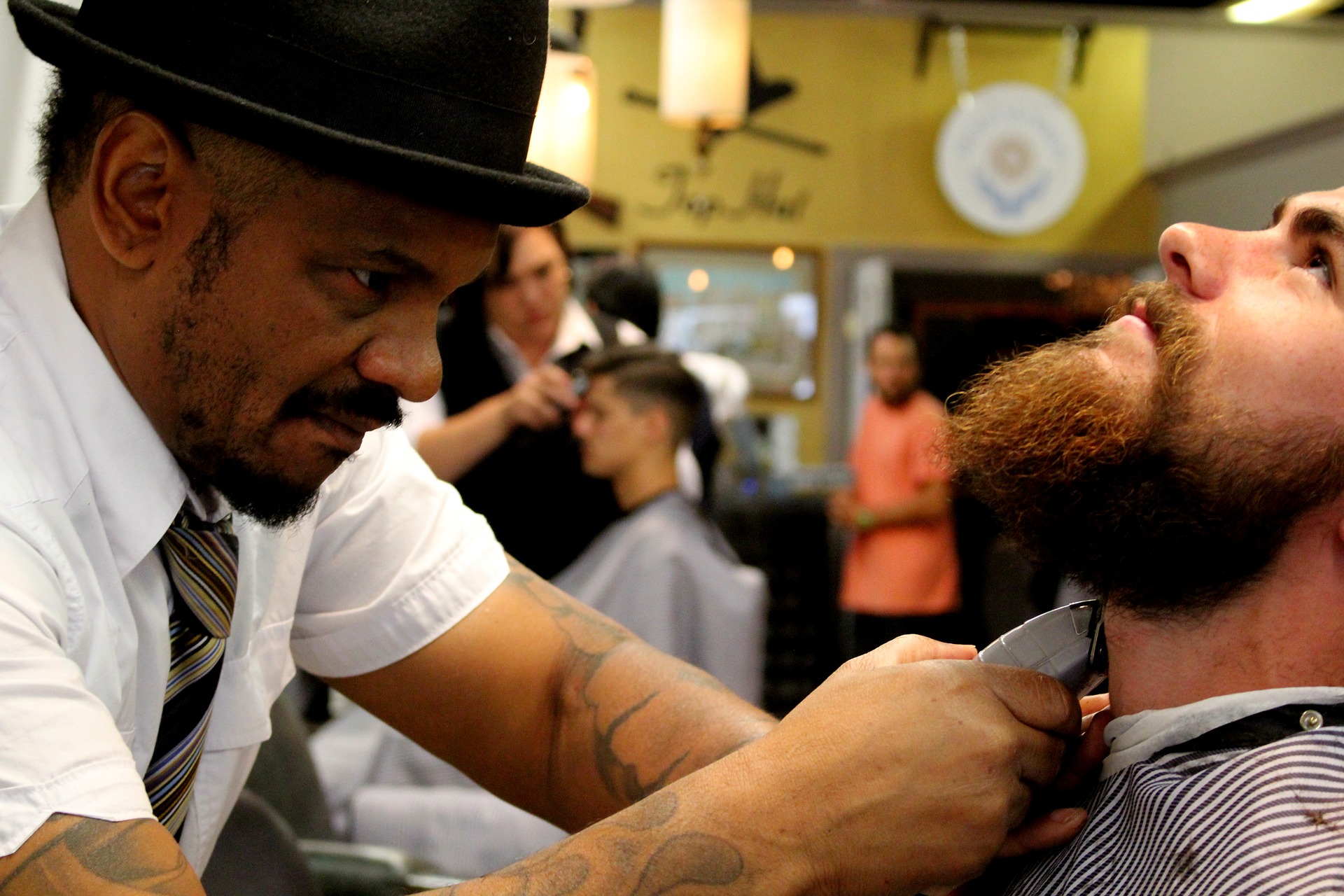
Outlining techniques are commonly referred to as detailing, or finishing techniques. They are the final step of any haircut or facial hair design service.
Detailing techniques are centred on the removal of stray hairs that do not fit into the desired outline of the design. While the primary purpose of detailing is to outline and refine the haircut, including facial and nape hair, remember to also pay attention to the eyebrows and ear hair.
Shears, trimmers, and razors can all be used at various stages of the outlining service. In this chapter we will focus on the use of shears and trimmers. More detail on the straight razor technique can be found in Chapter 4.
Outlining
Prior to the outlining service, carefully check the nape area, sides of neck, and behind the ears for skin abnormalities such as blemishes, moles, and other growths of the skin. Providing there is no communicable skin diseases, open wounds, and/or skin irritation, it is safe to perform the outlining service. Once you determine that the service is safe to perform, remember to use caution when working around moles and any other raised lesions of the skin.
Outlining with Shears
To detail the finished design with shears, comb the hair past the desired outline, then use the shears to remove any hair which falls outside of the desired outline. The shear-over-comb technique may be used to blend the newly established outline into the beard or haircut if necessary.
Note: This video has no sound.
https://media.bccampus.ca/id/0_6tye5u9f?width=608&height=402&playerId=23449753

Follow these guidelines when detailing with shears for a safe and comfortable experience for the client:
- Position the shears to move against the natural fall of the hair
- When working around the ears, the non-cutting hand should be used to push the ear forward or down in a gentle manner to create more room to safely trim around the area.
- Be aware of folds or wrinkles in the skin to avoid nicking/cutting the client
Outlining with Trimmers
Outlining the nape or facial hair with a trimmer/outliner requires the use of a trimmer in good working order, which means trimmer blades must be sufficiently sharp, free from debris, and sanitized according to local standards.
The trimmer will typically be used without a guard attachment when outlining. In addition to the trimmers, a cutting or barbering comb can be used to aid with the creation of straight lines and/or angles in the outline. Alternatively, curved lines, such as around the ears, are generally performed with a free-hand technique. Once an outline is established, the clipper/trimmer-over-comb technique is often used to blend the newly established outline into the beard or haircut.
Follow these guidelines when detailing with trimmers for a safe and comfortable experience for the client:
- To establish the initial outline of your design, turn the trimmer so that the teeth are positioned towards the skin. Gently cut along the desired outline to create the guideline.
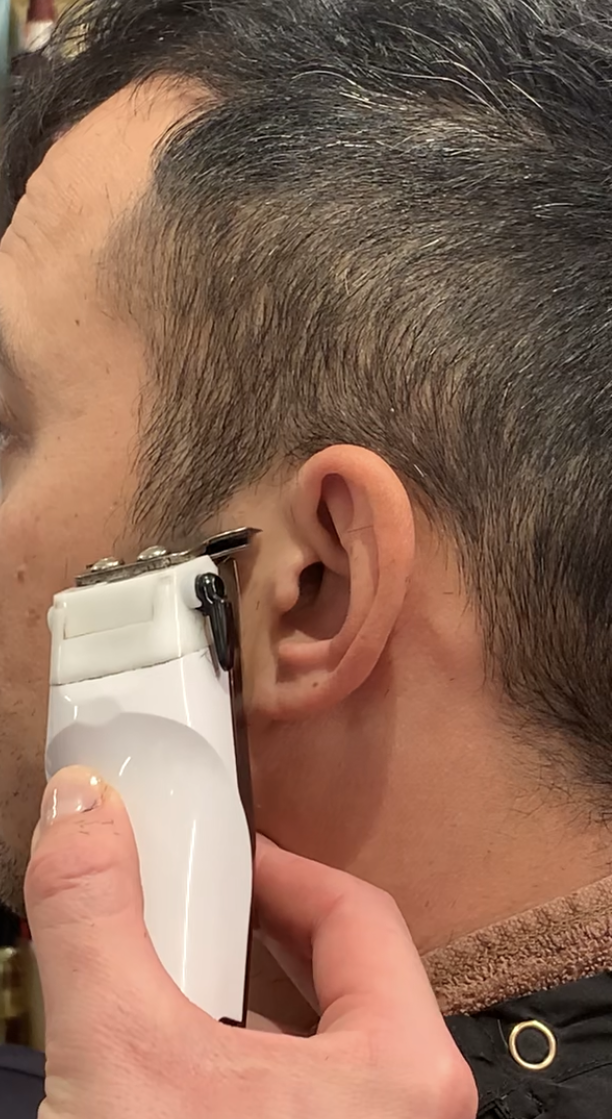
- Once the guideline is established, turn the trimmer over so that the stationary blade is resting on the skin. With gentle pressure, move the trimmer upwards towards the guideline.
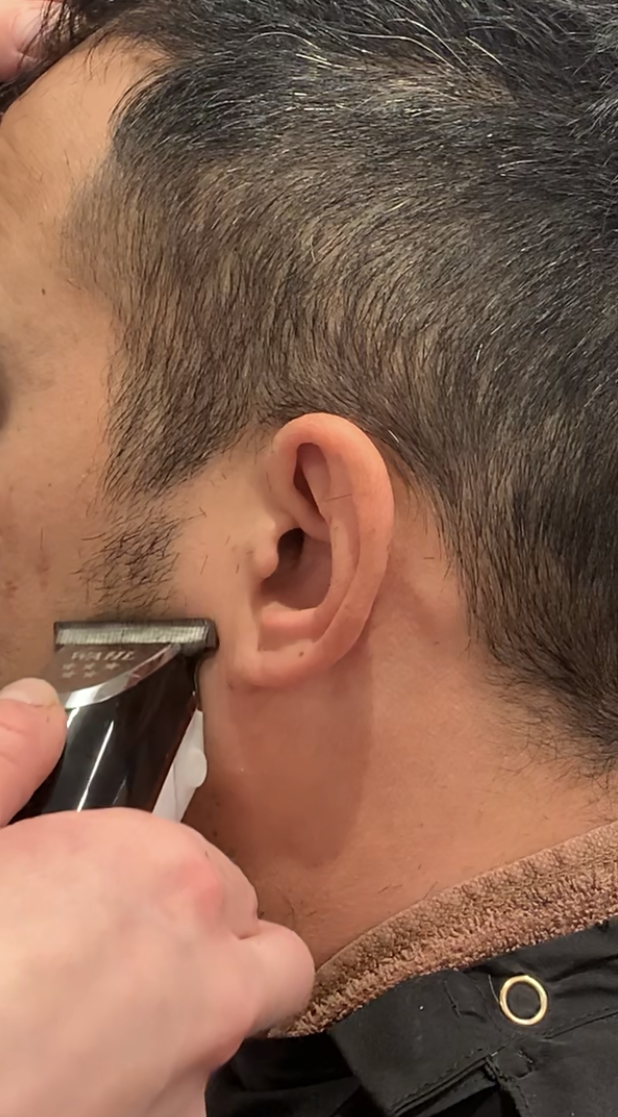
- When working around the ears, position the trimmer so that the outside edge is used to cut against the natural fall of the hair. The non-cutting hand should be used to push the ear forward or down in a gentle manner to create more room to safely trim around the area.
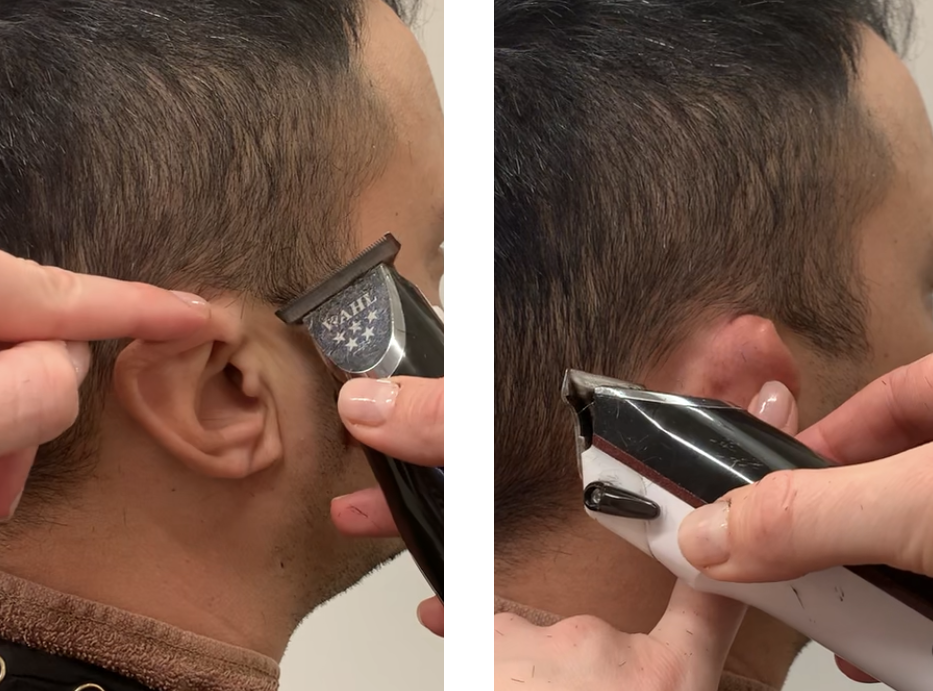
- When outlining the nape, remember to work with the shape of the natural hairline whenever possible in order to encourage a more natural appearance during the grow-out period.
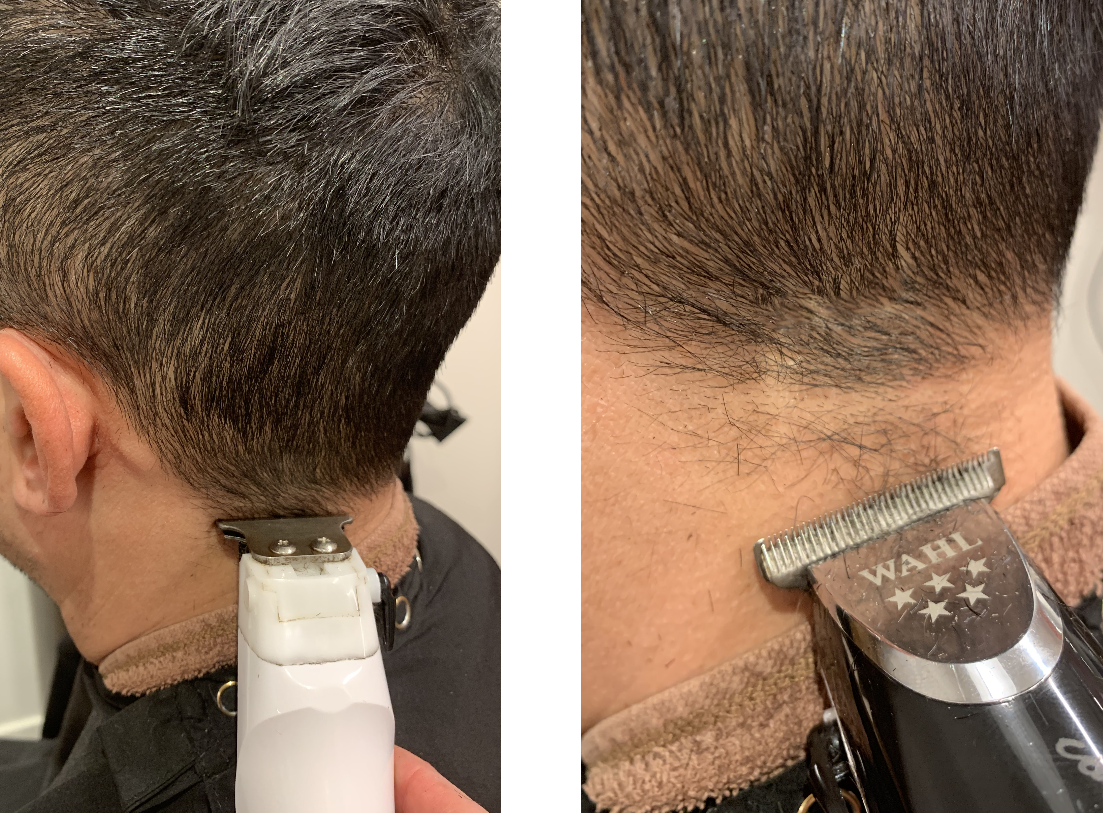
Additional Considerations: Eyebrows and Ears
Eyebrows
In addition to outlining, your client may require eyebrow trimming or shaping, and/or removal of stray hairs on the ears. Cleaning these areas up for the client will leave them with a much more polished final look.
The three most common methods to trim the eyebrows are:
- Trimmer-over-comb
- Shear-over-comb
- Free-hand trimming with shears
Consult with the client to determine whether you will need to eliminate length, density, or both.
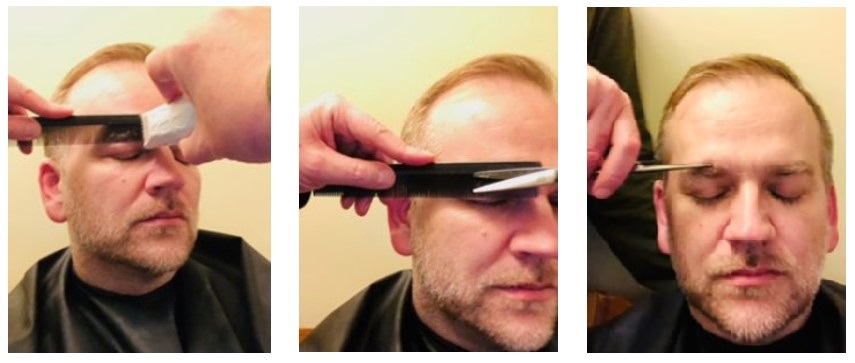
To perform an eyebrow shaping service:
- Project the eyebrow hair with a comb, and trim the excess length with a trimmer or shears.
- Shape the upper brow line by combing the brow hair upwards, then using shears to trim the excess hair just above the brow and create the desired shape.
Practice extreme caution when trimming eyebrows by using a slow, steady hand when working in this area. Always instruct the client to close their eyes during the service to prevent the trimmed hairs from falling into their eyes.
Ears
The trimmer/outliner is used to gently remove stray and unwanted hair from the top, sides, and lobes of the ears. The hair on the inner ear should be removed using a delicate touch so no harm is caused to the inner ear. The use of a t-bladed trimmer is preferable when working in confined spaces.
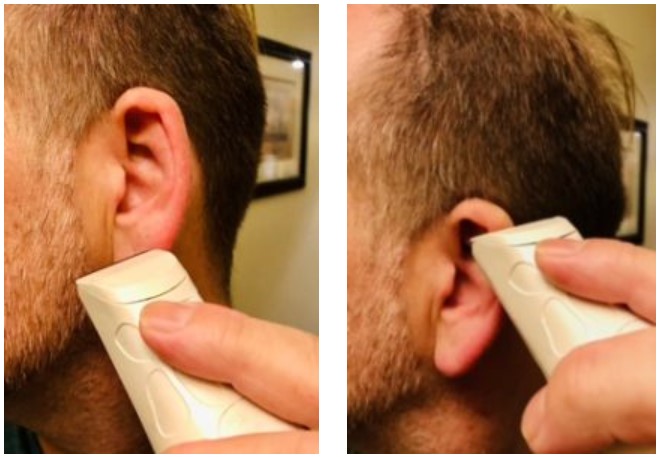
Media Attributions
- Title image by Mídia is licensed under a Pexels Licence.
- Outlining with shears video by cottonbro is licensed under a Pexels Licence.
- Working around ears by A. Magtiza is licensed under a CC BY 4.0 Licence.
- Outlining with trimmers by A. Magtiza is licensed under a CC BY 4.0 Licence.
- Outlining nape by A. Magtiza is licensed under a CC BY 4.0 Licence.
- Trimming eyebrows by Gary Franceschini is licensed under a CC BY 4.0 Licence.
- Trimming ears by Gary Franceschini is licensed under a CC BY 4.0 Licence.

